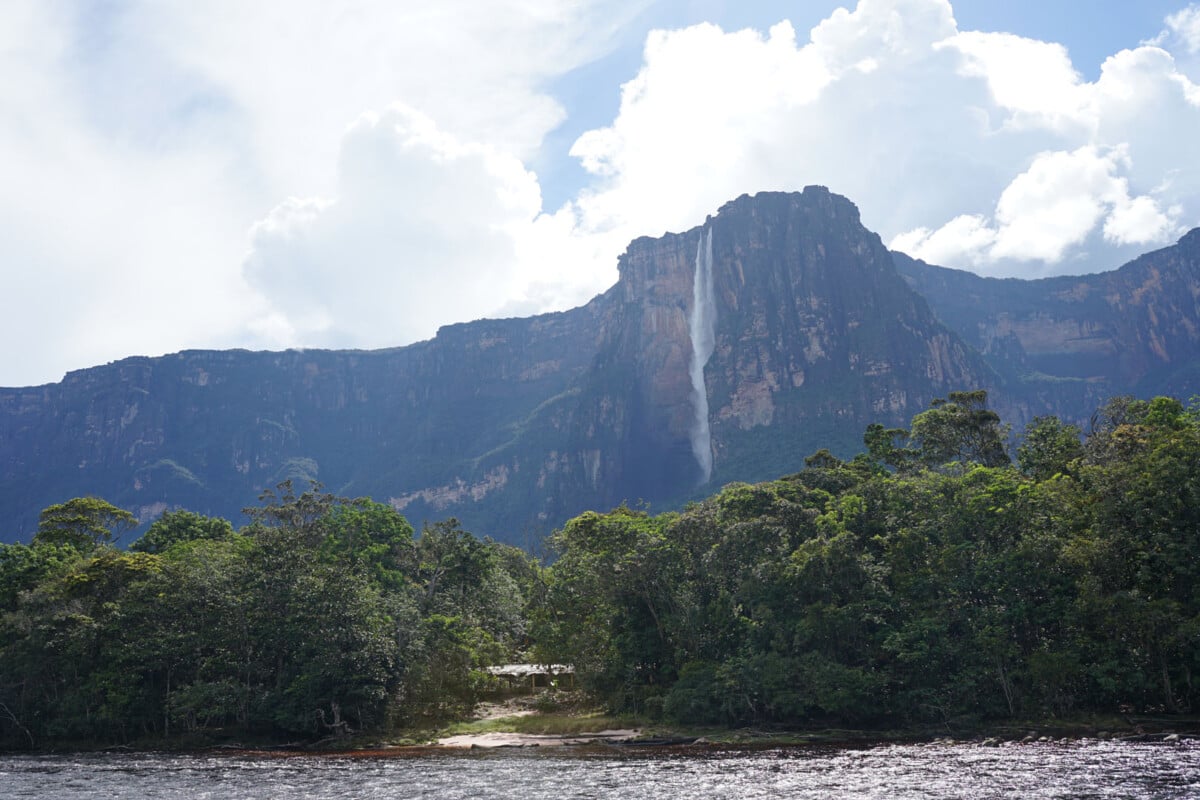Venezuela, a nation imbued with captivating history and breathtaking vistas, is often synonymous with its natural beauty and rich culture. Beyond its picturesque landscapes, Venezuela is a country with a myriad of unusual facts that unveil hidden stories and a wild history. This article explores lesser-known facets of this South American gem, from its stunning geographical anomalies to intriguing realities of its societal fabric.
1. The World’s Highest Waterfall
Angel Falls, or Salto Ángel, stands proudly at 3,212 feet tall, making it the highest uninterrupted waterfall in the world. Discovered in 1933 by a United States pilot named Jimmi Angel, this astonishing cascade is located in the Canaima National Park, a UNESCO World Heritage site. The allure of Angel Falls isn’t merely its height; the water plummets from the Auyán-tepui, a table-top mountain characterized by its flat top and steep sides. This dramatic geological formation contributes to the region’s unique ecology, housing numerous endemic species.
2. An Elaborate Network of Caves
Deep beneath the surface of Venezuela lies one of the world’s most extensive cave systems, the Cueva del Guacharo. Known as the “Guacharo Cave,” it spans over 10 kilometers and serves as a sanctuary for the oilbird, a nocturnal bird that feeds on fruit. This cave is particularly remarkable due to its unique ecosystem, featuring stunning stalactites and stalagmites that have taken millennia to form. The juxtaposition of light and shadow in these subterranean chambers creates an otherworldly atmosphere for explorers and scientists alike.
3. The Devil’s Corral
Las Lajas Sanctuary, a Catholic church famously built on a bridge, overlooks the Guácharo River. However, nearby lies a lesser-known locale dubbed “El Corral del Diablo,” or the Devil’s Corral. Local lore suggests that this site was used by bandits to hide their plundered treasures. The place has an eerie charisma, drawing both tourists and thrill-seekers who are intrigued by its mystique. The juxtaposition of its beauty and sinister history adds layers to the cultural narrative of the region.
4. Biodiversity Hotspot
The Andes mountains and the Amazon rainforest converge in Venezuela, creating a unique tapestry of biodiversity. Venezuela is home to over 20,000 plant species and approximately 1,500 species of birds, making it a treasure trove for herbalists and ornithologists. The country’s vast national parks, such as Henri Pittier and Los Roques, exemplify the unmatched diversity within ecosystems, ranging from coastal mangroves to mountainous highlands. This rich biodiversity underscores the significance of conservation efforts in preserving these environments for future generations.
5. The Birthplace of Extraordinary Leaders
Venezuela has produced notable leaders, most famously Simón Bolívar, known as the “Liberator” of South America. Bolívar’s vision for a united Latin America not only defined the course of Venezuelan history but resonated across the continent, leading to various independence movements in Colombia, Peru, and Ecuador. Despite his death in 1830, Bolívar’s ideologies continue to shape Venezuela’s political landscape and inspire movements today.
6. A Culinary Mosaic
The culinary landscape of Venezuela is an eclectic mix of indigenous, African, and European influences. Among its most distinctive dishes is arepas, a cornmeal cake that can be filled with a variety of ingredients, from cheese to meats. The presence of Pabellón Criollo, a traditional dish consisting of shredded beef, black beans, rice, and fried plantains, reveals a rich cultural tapestry. Each region boasts its own specialties, making Venezuelan cuisine a vibrant expression of its heritage.
7. Unique Flora and Fauna
The country is dotted with moriche palms and peculiar wildlife, such as the capybara, the world’s largest rodent. The fauna extends to the angel fish and the colorful toucan, showcasing the country’s unique ecological character. Additionally, Venezuela’s tepuis have led to the evolution of numerous endemic species, exemplifying the concept of evolution in isolation.
8. The Oil Boom and Economic Tapestry
Venezuela has hosted massive oil reserves, making it one of the wealthiest countries in the world during the 20th century. The country’s economy experienced a colossal boom post-World War II, largely due to the exploitation of these resources. However, the over-reliance on oil has led to cyclical economic crises, drawing attention to the need for diversification and sustainable practices. This blend of prosperity and adversity highlights the complexities of economic management in resource-rich nations.
9. A Cultural Melting Pot
Venezuela embodies a spectrum of cultures, with influences from the indigenous tribes, African descendants, and European settlers. Music genres such as joropo and gaita celebrate this diversity, blending African rhythms with indigenous melodies. Furthermore, Venezuelan festivals like Carnaval and La Feria de la Chinita underscore the cultural resilience and joy that characterize the Venezuelan spirit, bringing communities together in colorful displays of tradition.
10. An Evolving Political Landscape
Venezuelan history has been punctuated by significant political upheavals. In recent years, the nation has faced a political crisis that has reshaped the social landscape. The dramatic political shifts reveal underlying tensions within Venezuelan society, reflecting an intricate narrative that involves diverse perspectives and aspirations for change. Analyses of the current situation often reveal insights into the complexities of governance and societal dynamics in contemporary Venezuela.
Venezuela is a tapestry interwoven with hidden stories and extraordinary historical narratives. From geological wonders to cultural diversity and political challenges, the country’s unusual facts offer a glimpse into its rich legacy. As an enigma encapsulated by its landscapes and people, Venezuela continues to inspire curiosity and appreciation for its unique heritage and potential.









